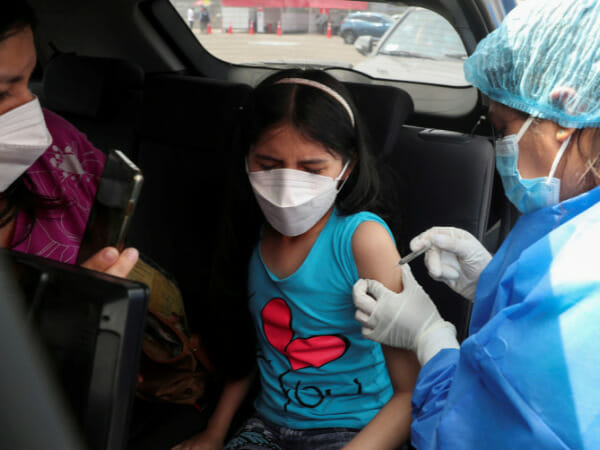Symptomatic kids develop long COVID, mRNA shots give best protection in breast milk
The following is a summary of some recent studies on COVID-19. They include research that warrants further study to corroborate the findings and that has yet to be certified by peer review.
One in four kids with COVID develop lingering problems
One in four children with COVID-19 symptoms develop “long COVID,” according to data pooled from 21 earlier studies conducted in Europe, Asia, Australia and South America.
Among the 80,071 children with COVID-19 in the studies, 25% developed symptoms that lasted at least 4-to-12 weeks or new persistent symptoms that appeared within 12 weeks, researchers reported on Sunday on medRxiv ahead of peer review.
The most frequent problems were neuropsychiatric (mood symptoms, fatigue, sleep disorders, headaches, cognitive alterations, dizziness, balance problems), cardiorespiratory (breathing difficulty, congestion, exercise intolerance, chest pain and tightness, cough, irregular heart rhythm), skin-related (excessive sweating, itchiness, hair loss) and gastrointestinal (abdominal pain, constipation, diarrhea, vomiting, and nausea).
Analyses of data pooled from many different studies with different methodologies cannot yield firm conclusions, the researchers acknowledge. What is clear, however, is that “children and adolescents have also physical and mental health consequences derived from COVID-19,” said study coauthor Sonia Villapol of Houston Methodist Research Institute in Texas.

A child is administered Pfizer’s coronavirus disease (COVID-19) vaccine at a drive-through vaccination site, in Lima, Peru January 24, 2022. REUTERS/Sebastian Castaneda
“Identifying the main signs and symptoms of pediatric long COVID can help diagnose, develop better treatments, create multidisciplinary teams for optimal clinical management, and find risk factors for prevention.”
Vaccine protection in mother’s milk strongest after mRNA shots.
Women who wish to pass protective antibodies induced by COVID-19 vaccines to their babies via breast milk should opt for the mRNA shots from Moderna or Pfizer/BioNTech, according to a study reported on Monday in JAMA Pediatrics.
For the study, 124 lactating women each provided 17 milk samples over a period of 100 days.
The women had received either an mRNA vaccine or a vector-based vaccine from Johnson & Johnson or AstraZeneca. Researchers measured two types of antibodies in the milk samples – IgA antibodies and IgG antibodies, both of which are thought to play important roles in protecting breastfed infants. Nearly all – 96% to 97% – of the women who received both doses of an mRNA vaccine had detectable IgA antibodies in their milk, while only 39% had antibodies in their milk after two doses of the AstraZeneca shot and 48% after the one-dose J&J vaccine. All the women who received both doses of the Pfizer/BioNTech, Moderna or AstraZeneca vaccines had IgG antibodies, compared to only 28% of women who received J&J’s shot.
“An mRNA-based COVID-19 vaccine is the optimal choice for lactating women when they want to transfer breast milk antibodies to their infants,” the researchers concluded.
Omicron is infectious on surfaces longer than original virus
Omicron particles remain infectious on surfaces for longer periods than particles of the original SARS-CoV-2, according to laboratory experiments.
Researchers put droplets of infectious virus from the original coronavirus version and the Omicron BA.1 variant on a variety of surfaces at room temperature.
Related Articles
On smooth surfaces (glass, stainless steel and plastic sheet), Omicron was still infectious after seven days, whereas particles of the original SARS-CoV-2 were no longer infectious on stainless steel and plastic sheets by day 4 and on glass by day 7, the researchers reported on Thursday on bioRxiv ahead of peer review.
On tissue paper and printing paper, the original virus was no longer infectious at 30 minutes. Omicron was still infectious at 30 minutes, but no longer after an hour, the researchers said.
For the most part, SARS-CoV-2 is transmitted via respiratory droplets in the air. While infection via contact with contaminated surfaces is less common, the new study “highlights the importance of hand hygiene and cleaning on surfaces that are regularly touched by different persons,” said study coauthor Leo Poon of the University of Hong Kong. “For surfaces and settings contaminated by a COVID-19 patient, proper cleaning should be done.”
(Reporting by Nancy Lapid; Editing by Bill Berkrot)

